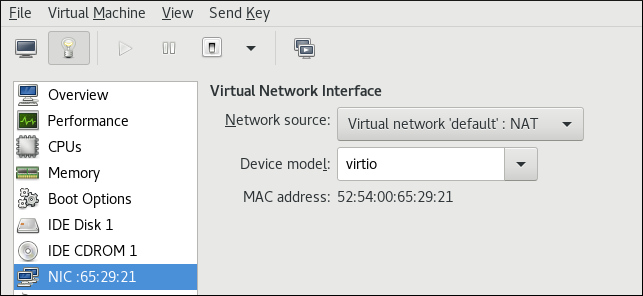Questo contenuto non è disponibile nella lingua selezionata.
5.3. Using KVM virtio Drivers for Network Interface Devices
When network interfaces use KVM virtio drivers, KVM does not emulate networking hardware which removes processing overhead and can increase the guest performance. In Red Hat Enterprise Linux 7, virtio is used as the default network interface type. However, if this is configured differently on your system, you can use the following procedures:
- To attach a virtio network device to a guest, use the
virsh attach-interfacecommand with themodel --virtiooption.Alternatively, in the virt-manager interface, navigate to the guest's Virtual hardware details screen and click . In the Add New Virtual Hardware screen, select Network, and change Device model tovirtio: - To change the type of an existing interface to virtio, use the
virsh editcommand to edit the XML configuration of the intended guest, and change themodel typeattribute tovirtio, for example as follows:Copy to Clipboard Copied! Toggle word wrap Toggle overflow Alternatively, in the virt-manager interface, navigate to the guest's Virtual hardware details screen, select theNICitem, and change Device model tovirtio:
Note
If the naming of network interfaces inside the guest is not consistent across reboots, ensure all interfaces presented to the guest are of the same device model, preferably
virtio-net. For details, see the Red Hat Knowledgebase.

